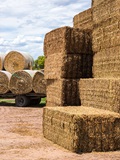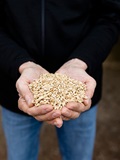Central West NSW
26 January 2024
| Date | CW 24 | CW 23 | CW 5YA |
|---|---|---|---|
| 05-Jan-24 | 283 | 264 | 321 |
| 12-Jan-24 | 288 | 275 | 319 |
| 19-Jan-24 | 288 | 285 | 313 |
| 26-Jan-24 | 288 | 293 | 318 |
| 02-Feb-24 | 288 | 303 | 331 |
| 09-Feb-24 | 288 | 318 | 327 |
| 16-Feb-24 | 283 | 319 | 327 |
| 23-Feb-24 | 278 | 320 | 327 |
| 01-Mar-24 | 278 | 325 | 328 |
| 08-Mar-24 | 278 | 333 | 326 |
| 15-Mar-24 | 281 | 333 | 322 |
| 22-Mar-24 | 283 | 333 | 322 |
| 29-Mar-24 | 293 | 338 | 324 |
| 05-Apr-24 | 298 | 343 | 325 |
| 12-Apr-24 | 303 | 343 | 325 |
| 19-Apr-24 | 303 | 343 | 323 |
| 26-Apr-24 | 308 | 348 | 329 |
| 03-May-24 | 313 | 348 | 329 |
| 10-May-24 | 316 | 348 | 329 |
| 17-May-24 | 318 | 348 | 332 |
| 24-May-24 | 323 | 348 | 333 |
| 31-May-24 | 353 | 350 | 340 |
| 07-Jun-24 | 353 | 350 | 340 |
| 14-Jun-24 | 356 | 348 | 339 |
| 21-Jun-24 | 358 | 352 | 339 |
| 28-Jun-24 | 363 | 353 | 341 |
| 05-Jul-24 | 363 | 330 | 341 |
| 12-Jul-24 | 363 | 318 | 328 |
| 19-Jul-24 | 363 | 305 | 326 |
| 26-Jul-24 | 305 | 326 | |
| 02-Aug-24 | 305 | 326 | |
| 09-Aug-24 | 305 | 326 | |
| 16-Aug-24 | 303 | 325 | |
| 23-Aug-24 | 300 | 319 | |
| 30-Aug-24 | 300 | 312 | |
| 06-Sep-24 | 305 | 313 | |
| 13-Sep-24 | 305 | 289 | |
| 20-Sep-24 | 305 | 286 | |
| 27-Sep-24 | 303 | 286 | |
| 04-Oct-24 | 300 | 285 | |
| 11-Oct-24 | 290 | 283 | |
| 18-Oct-24 | 280 | 267 | |
| 25-Oct-24 | 285 | 268 | |
| 01-Nov-24 | 285 | 272 | |
| 08-Nov-24 | 282 | 272 | |
| 15-Nov-24 | 278 | 272 | |
| 22-Nov-24 | 278 | 273 | |
| 29-Nov-24 | 278 | 274 | |
| 06-Dec-24 | 278 | 276 | |
| 13-Dec-24 | 278 | 276 | |
| 20-Dec-24 | 278 | 277 | |
| 27-Dec-24 | 283 | 316 |
Notes:
Change in price is the change since the last report. Hay quoted is sourced and delivered locally, GST exclusive unless stated otherwise. It should be noted that local prices quoted may not be the cheapest available, sourcing it from another region may be more affordable, and buyers are encouraged to evaluate all options. Prices are indicative to a mid-range shedded product, and based on the best indication of market value at the time of reporting. It should be noted there is a wide variation in quality of hay, prices for a mid-range product will not reflect the weighted average of trade. Prices will naturally vary based on the product quantity and quality, buyer/seller relationship and the size of the trade.The hay report has been commissioned by Dairy Australia to provide an independent and timely assessment of hay markets in each dairy region. This report is created using data provided by the Australian Fodder Industry Association (AFIA). It should be remembered that actual prices may vary for quality or other reasons. Whilst all reasonable steps have been taken to ensure the accuracy of the information contained in this report, Dairy Australia disclaims all liability to the fullest extent permitted by Australian law for any inadvertent errors and for any losses or damages stemming from reliance upon its content. Dairy Australia recommends all persons seek independent advice and, where appropriate, advice from a qualified advisor before making any decisions about changes to business strategy.

